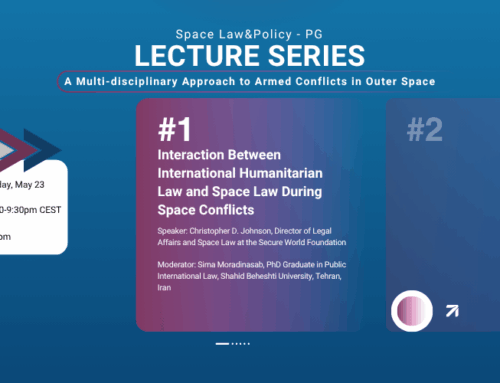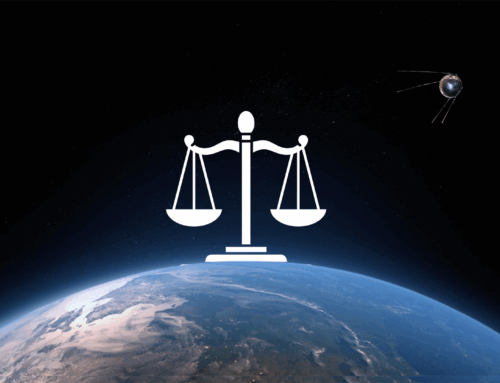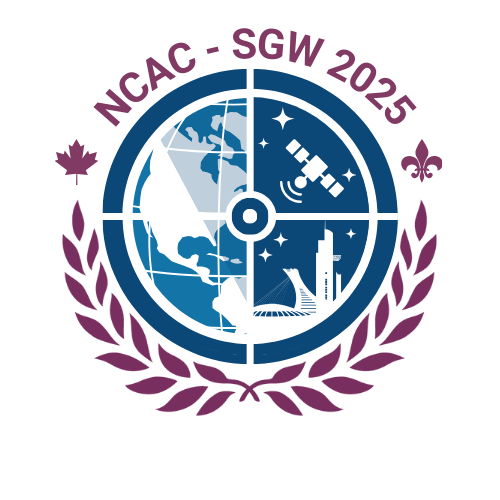The risk of armed conflicts in outer space cannot be neglected. ASAT testing is a reality, posing significant challenges. The issue of the termination or suspension of the Outer Space Treaty has not been addressed in general international law.
Introduction
Armed conflicts are no longer restricted to Earth; they are becoming a reality in outer space. This phenomenon creates new legal challenges for which legal solutions should be found in both the special regime of space law and the general regime of international law.
One of the main problems relates to the applicability of space law treaties during armed conflicts. This is of crucial importance since many treaties are often suspended or terminated in times of war on the grounds of fundamental change of circumstances.
The International Law Commission (ILC) introduced a new topic on its agenda entitled ‘effects of armed conflicts on treaties’ in 2000. This enabled the subsidiary organ of the General Assembly (GA) to, inter alia, codify and progressively develop the rules on suspension and termination of treaties during war. Analyzing Article 62 of the Vienna Convention on the Law of Treaties (VCLT) as well as the 2011 ILC Draft Articles on ‘effects of armed conflicts on treaties’, this blog post highlights the existing lacunae regarding the status of the Outer Space Treaty (OST) in times of armed conflicts in outer space.
Armed Conflicts in Outer Space as a Fundamental Change of Circumstances
Changing the circumstances may prejudice the object and purpose of a treaty (Mark E. Villiger, at p. 769). That said, its effect on the status of a treaty cannot be neglected. Article 62 VCLT titled ‘Fundamental Change of Circumstances’ provides that:
“A Fundamental change of circumstances which has occurred with regard to those existing at the time of conclusion of a treaty, and which was not foreseen by the parties, may not be invoked as a ground for terminating or withdrawing from the treaty unless:
(a) the existence of those circumstances constituted an essential basis of the consent of the parties to be bound by the treaty; and
(b) the effect of the change is radically to transform the extent of obligations still to be performed under the treaty”.
This provision reflects the principle of rebus sic stantibus in international law. However, the formulation of Article 62 VCLT clearly shows that this rule may not be invoked as a justification for termination or withdrawal from the treaty unless the conditions of paragraphs 1 and 2 above have been met. With this in mind, the question is:
‘Can a treaty party to the OST invoke armed conflicts in outer space as a fundamental change of circumstance?’
To answer this question, Article 62 should be read with paying attention to the context of the VCLT. Article 73 of the same Treaty stipulates that:
“The provisions of the present convention shall not prejudge any question that may arise in regard to [….] from the outbreak of hostilities between States”.
This means that Article 62 VCLT solely deals with the termination of treaties in peacetime and not wartime. In the event of armed conflicts in outer space, therefore, States parties to the OST cannot resort to Article 62 as a ground for terminating or suspending the treaty.
Effects of Armed Conflicts on the OST
The ILC put the topic of “Effects of Armed Conflicts on Treaties” on its agenda in 2000. In the commentary to Article 5, Lord McNair stated that “There is abundant evidence that treaties which in express terms purport to regulate the relations of the contracting parties during a war, including the actual conduct of warfare, remain in force during war and do not require revival after its termination” (ILC, at 50). In the 2008 report, the ILC regarded the Treaty banning nuclear weapon tests in the atmosphere, in outer space, and under water as an example of these treaties. This reference, however, was omitted in the final draft adopted in 2011.
Paying attention to the criterion provided by McNair, the question is whether the OST purports to regulate the relations of the contracting parties during a war.
The preamble of the OST explicitly refers to “recognizing the common interest of all mankind in the progress of the exploration and use of outer space for peaceful purposes.” The drafters of the OST, therefore, did not aim to extend national rivalries to outer space. This shows that the answer to the said question cannot be affirmative. Does it mean that the OST is terminated or suspended during hostilities and between belligerent parties?
The ILC annexed an indicative list to the 2011 Draft Articles. The annex contains a list of ‘categories of treaties the subject matter of which carries an implication that they continue in operation, in whole or in part, during armed conflict’ (ILC, at 120). At first sight, it appears that the answer can be found in the annex. Nonetheless, the OST cannot fall into any of the 12 categories of treaties listed in the annex. Out of them, the most relevant one would be Category ‘C’ on ‘Multi-lateral Lawmaking Treaties.’ It should be kept in mind, however, that the OST is a treaty of principles (Manfred Lachs, at 301) and not a law-making treaty.
As a consequence, the status of the OST in hostilities in outer space is still debated. It is not clear why the ILC is not willing to consider the status of the space treaties during armed conflicts. While the ILC is entitled to survey the whole field of international law with a view to selecting topics for codification and progressive development (ILC statute, Article 18), it often does not tend to fulfill this task regarding space law for different reasons. This view has been criticized as it can result in marginalizing the whole field of space law in international law.
The Way Forward
Nowadays, the risk of armed conflicts in outer space cannot be neglected. ASAT testing is a reality, posing significant challenges. The issue of the termination or suspension of the OST has not been addressed in general international law. The 2011 Draft Articles on the Effects of Armed Conflicts on Treaties, intentionally or unintentionally, ignored space law treaties. This is exactly where the space law regime, as a special regime, should seek and provide an answer. The UN-COPUOS is the best place for considering this topic. For example, the topic at hand can be included in the item 5 of the Legal Sub-Committee’s agenda on ‘Status and application of the five United Nations treaties on outer space, and ways and means, including capacity-building, to promote their implementation’. The second alternative scenario is item 10 of the provisional agenda of the Scientific and Technical Sub-committee, dealing with long-term sustainability of outer space activities, including responsible use of outer space.
There is no doubt that these endeavors in the framework of the COPUOS are essential to addressing the legal gap regarding the status of the OST in hostilities in outer space.
Author
Dr. Sima Moradinasab is a Ph.D. Graduate in Public International Law from Shahid Beheshti University (SBU), specialized in Space Law. As a visiting researcher, she conducted and completed her doctoral research at the Leiden University’s International Institute of Air and Space Law (IIASL). Sima is a 2025 International Astronautical Federation (IAF) Emerging Space Leader. She has written and published several articles on space law and presents her research in international conferences.
Sima joined the Space Generation Advisory Council (SGAC) in January 2024 as a member of the Space Law and Policy Project Group (SLP PG), where she currently co-leads the research group ‘A Multi-displinary Approach to Armed Conflicts in Outer Space’. Sima currently serves as the SGAC National Point of Contact for Iran and is a team member of the Space Generation Advocacy and Policy Platform (SGAPP). She is also an individual member of the International Institute of Space Law (IISL).








